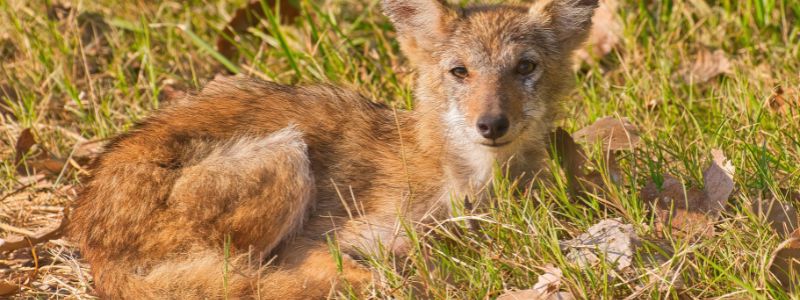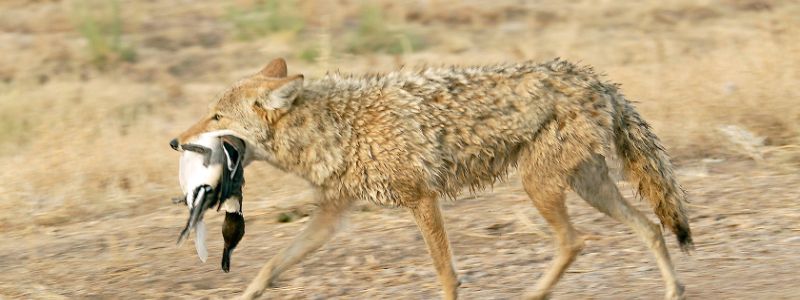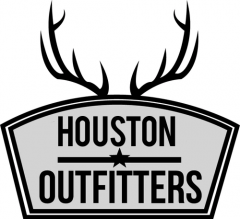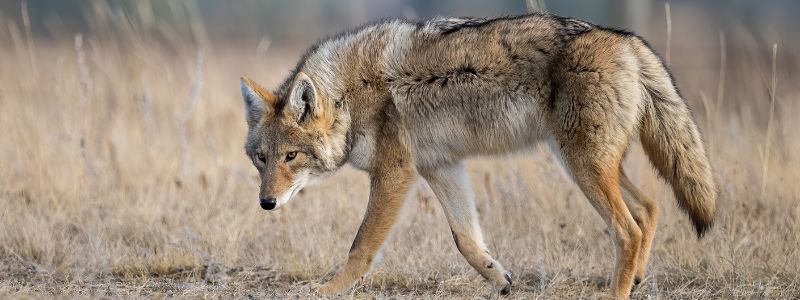A Look at Varmint Hunting
Open season on coyotes keeps these opportunistic predators in check.
Hunters like going after coyotes. These wild canines are stealthy and clever, making it a real challenge to shoot or trap them. Ranchers consider coyotes a significant threat to livestock, and so it’s open season on the animals in most places where large populations of them are present. Animal rights activists, however, raise a very well-taken point about the ethics involved in killing an animal that is not hunted for meat and provides little profit from the sale of its pelt but is often hunted primarily for sport.
Hunting Coyotes for Sport
Coyotes, with their high intelligence and keen senses, are challenging prey. They are difficult to lure into the open, preferring to remain close to cover. Hunters must use all of their superior mental abilities in order to outsmart a coyote. Experienced varmint hunters plan every move. They are careful to control their noise, scent, and appearance. They are well aware that, once the coyote is alerted to the hunter’s presence, it will simply disappear into the landscape. Many frustrated hunters hear the animals howl, but never lure one close enough to see. Often, the coyote has seen the human first and slipped away undetected.
A writer, fly fishing guide, and experienced coyote hunter says young, inexperienced coyotes may be fooled easily by calls that imitate wounded rodents or breeding females and rush into the area too quickly for a hunter with a scoped rifle to take aim and get off an accurate shot. He recommends carrying a shotgun as well as a rifle so that close encounters are not missed opportunities.

Animals that are familiar with human tactics, including those who have been subjected to intense hunting pressure, come to recognize the artificial calls as mere ploys and stay far away from them. They will often circle downwind of the call and out of range, determine the source of the sound, and then slink away.
Uses for Coyotes
A successful coyote hunt ends with a dead animal that must be dealt with. Fur buyers will purchase high-quality, light-colored coyote pelts in top condition. According to Richard Westfall, a fur buyer in Union County, Ohio, the top price for such pelts is around $20 each, with pelts of lower quality bringing as little as $2 apiece. Skinning the animals and preparing the hides for the market is a time-consuming process, so hunters and trappers are unlikely to make much profit from selling furs.
Few people are willing to eat coyote meat, although some claim that the tenderloins, when soaked in milk and heavily seasoned, are edible. Many hunters bury the coyotes they shoot, and some simply leave them where they fall, expecting carrion eaters to dispose of them. Animal rights activists decry the practice of killing healthy, beautiful wild animals and leaving their bodies to the buzzards. It seems cruel, and they question whether it is necessary. Killing Coyote, a film produced in 2000 by The Fund for Animals provides a thought-provoking examination of the practice of hunting coyotes for sport.
Coyotes Threaten Livestock
Traditionally, ethical hunters follow a code that does not include killing merely for fun, but mandates that the animals must be taken for food, for pelts, or to protect the lives of humans or livestock. Rick More owns the largest sheep-producing farm in Ohio. The farm has been in Moore’s family for eight generations. He explains that predation from coyotes can be a crippling expense for livestock producers.

“Agriculture is challenging enough without dealing with predators and wild animal problems,” says More. He explains that lambs are tempting prey for hungry coyotes. Small, unaggressive, and relatively easy to kill, lambs provide coyotes with food for themselves and they’re young. When there is plenty of other game available to the coyotes, such as deer and rodents, they may not venture into the open after sheep. However, some coyotes develop a taste for them, returning again and again to ravage the flock. More employs a professional trapper to keep livestock loss to predatory coyotes at a manageable level.
More says that coyotes live on the edges of open farmland, and successful hunting expeditions often result from setting up along the brushy margins where wooded areas meet cultivated land.
Coyotes are both beautiful animals that play a natural role in the wild environment and stealthy predators that will kill valuable livestock. Although selling coyote pelts is minimally profitable and coyote meat is not especially appetizing, hunting them does provide a valuable service to the agricultural community.

